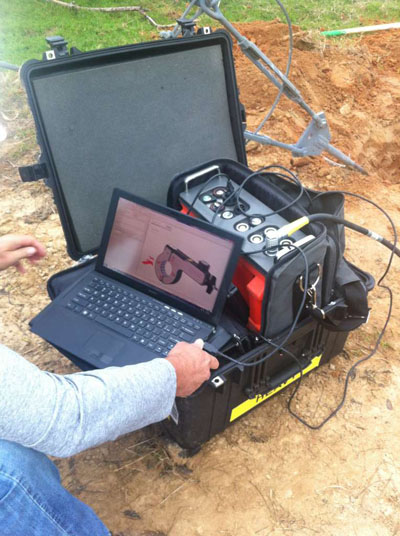MES offers rapid inspection by guided wave for Anchor Rods.
guided wave Anchor Rods
Understanding corrosion defects on buried anchor rods is a major concern for telecom tower owners. Corrosion defects account for approximately 10% of catastrophic tower failures. Traditional methods of inspection such as visual inspection by excavation, resistivity, or soil studies are useful, but all have limitations. These techniques are either too expensive or provide no useful information on the current condition of the buried anchor rod. MES utilizes patented technology to inspect 100% of buried rod using the Cylindrically Guided Wave Technique (CGWT) in combination with quantitative computer analysis to provide the most accurate assessment of corrosion damage and other defects. Cross sectional loss can be determined down to one percent, which allows our engineers to accurately asses the rod condition and determine the most cost effective action.
Understanding the condition of buried anchor rod empowers the structure owner to make the informed decisions. Our above ground inspection of the entire anchor rod eliminates the need for expensive and dangerous excavation.
Understanding CGWT
The Wavemaker™ Pipe Screening System uses low to medium frequency guided ultrasonic waves that propagate along the structure and is designed for rapid screening of anchor rod to detect external or internal corrosion as well as axial and circumferential cracking.
Our instrumentation is composed of three portable components, the transducer ring, the Wavemaker™ G4 instrument, and the controlling computer. MES has developed specific NDE techniques to quantitatively assess the condition of buried anchor rods and direct embedded steel poles with the added ability to monitor degradation over time.
APPLICATIONS
Solid or tubular anchor rod
Embedded steel poles
Concrete encased rods
Galvanized, copper clad, or coated rods
DYWIDAG anchor rods
CAPABILITIES
Non destructive technique
Inspection of 100% of rod volume
Rapid identification of corrosion damage in buried or covered structures
Ability to detect corrosion and other defects
Monitoring for corrosion over time
Collect corrosion data at difficult to access areas
Portable equipment
Sample Requirements
Sample Diameter Sizes – 1″ to 4″+ diameter
Surface preparation to scrape off loose paint or scale
Specifications
ASTM E 2775


